
I arrived in the town of Copan Ruinas (that is the name of the town, the ruins are simply Copan) late Sunday afternoon on August 31 and got a room in Hotel Via Via. It is affiliated in some way with the Hostel Via Via in Leon Nicaragua, and there are a few other Via Via's around the world. The two I've stayed at were well run, well priced and had good restaurants, I recommend both if you are ever in Leon, Nicaragua or Copan, Honduras. However I didn't go to Copan Ruinas for the hotels, I went to see the ruins of the ancient Mayan city. The next morning I walked from town to the ruins.
Copan was one of the great cities of the Mayans from around 250 to 900 AD. The remains of more than 3000 structures have been discovered in an area of about ten square miles. There is a model at the entrance to the site of the most significant excavated ruins:

Also at the entrance were some tame Macaws:
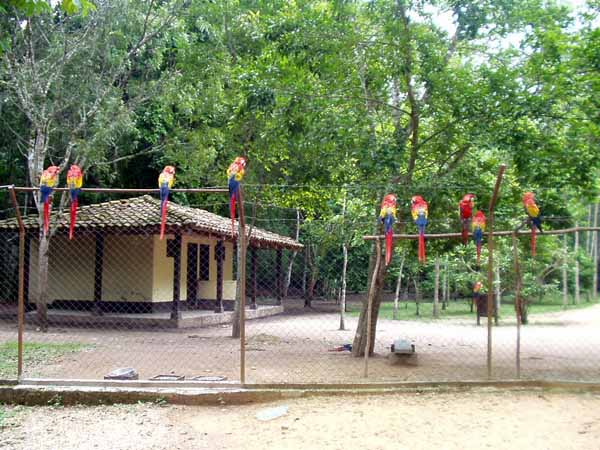
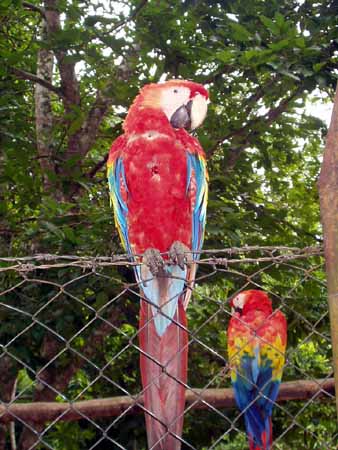

At the entrance I got together with a few other tourists and we hired a guide for $15 each. He was knowledgeable about the history of Copan and the history of the excavations and well worth the expense. I wish I remembered his name so I could recommend him to future visitors. The following pictures are of the Wind God Ik, Temple 11 (the niches are thought to represent entrances to the underworld) and a stella representing the 11th king of Copan, the Smoke King:
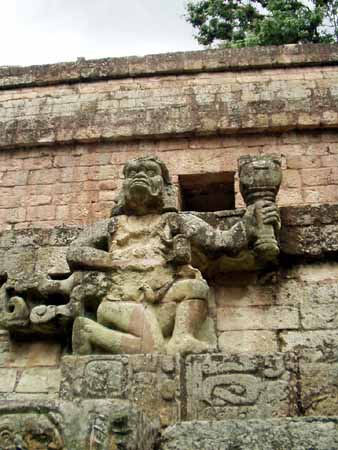
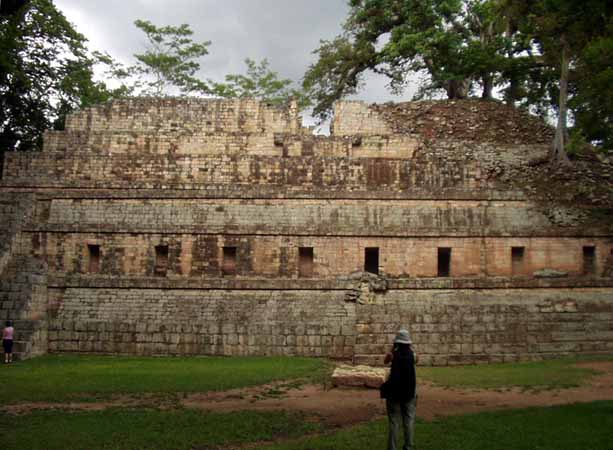
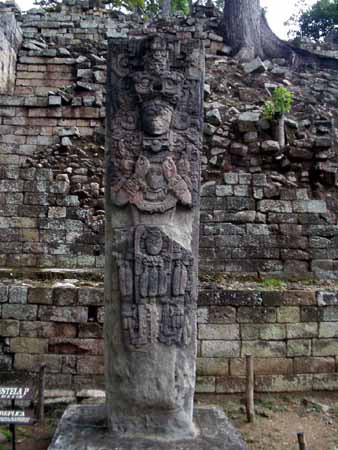
Next up is Temple 16. When the Mayans built new temples they often built over existing temples with no regard to the exterior of the older temple. However inside Temple 16 was found the temple called Rosalita by by our guide, and Rosalila by my guide book. I'll stick with Rosalita, which had been built over while carefully preserving its exterior surface, indicating it was very important to the Mayans. Inside of Rosalita was found an older temple, named Magarita. According to the guide inside Margarita were found the bones of the first king of Copan's and his wife. This was Mah K'ina Yax K'uk' mo', revered as a great shaman who ruled from 426 to 435 and began the 16 king dynasty that ruled during Copan's peak. Until recently tourists were allowed to go into the tunnels used for these excavations, but no longer. Archaeologists very carefully excavated around Rosalita without disturbing the integrity of Temple 11 and built an accurate model in the Copan Museum, pictured below to the right of Temple 11:
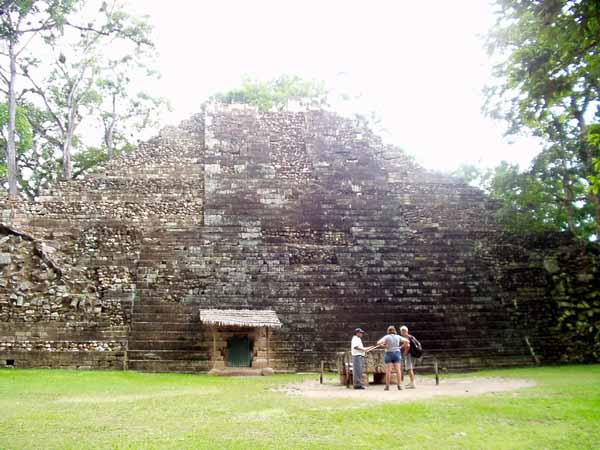
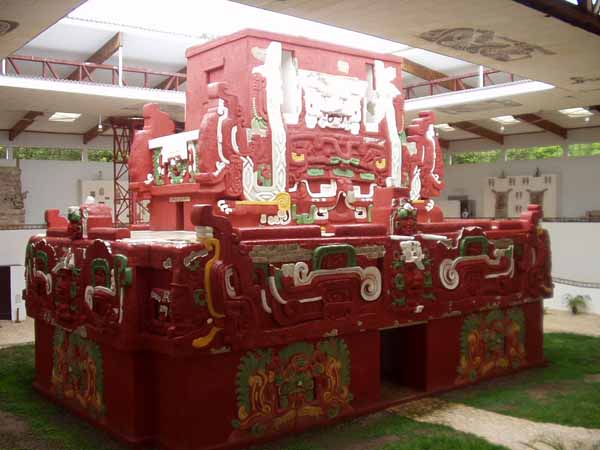
Rosalita is invaluable for anyone interested in the ancient Maya. After excavating other temples all that remains on the exterior are the building blocks of the temples; Rosalita gives archaeologists a good idea of how temples looked when new.
In front of Temple 16 is Altar Q, built by the 16th and last king of Copan, which has images of all 16 kings on the four sides. The picture after Altar Q is the back of Temple 16, which shows where excavation of the temple ended:

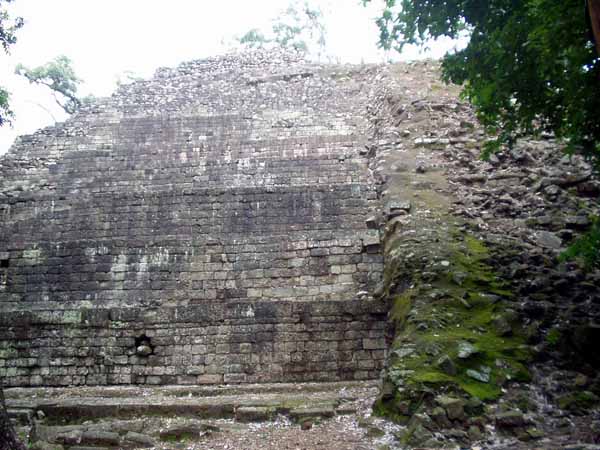
Two pictures of what is thought to be the residential area of the 16th king:
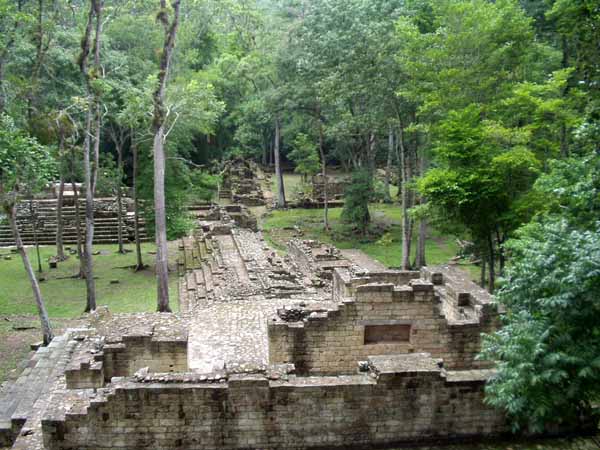
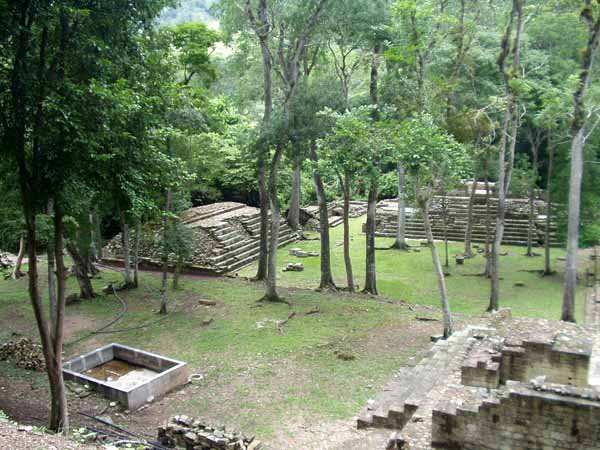
Pictures of the tomb of the last king on top of Temple 18. He's not there anymore:
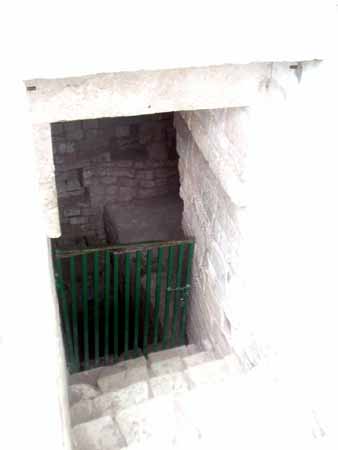
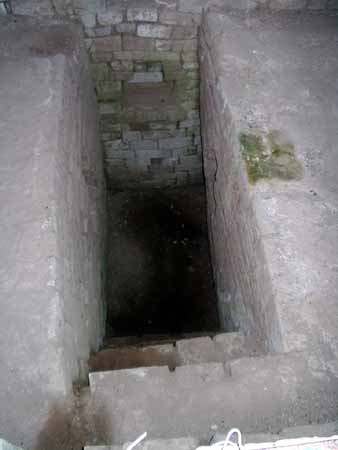
The farms and forests to the east of Temple 18 used to be the residential area for the nobility and other important Maya:

In the foreground of the next picture is Jaguar Place, in the background is Temple 27, built by the 13th king. The adjacent picture is another view of Jaguar Place where an important Jaguar dancing ritual took place.
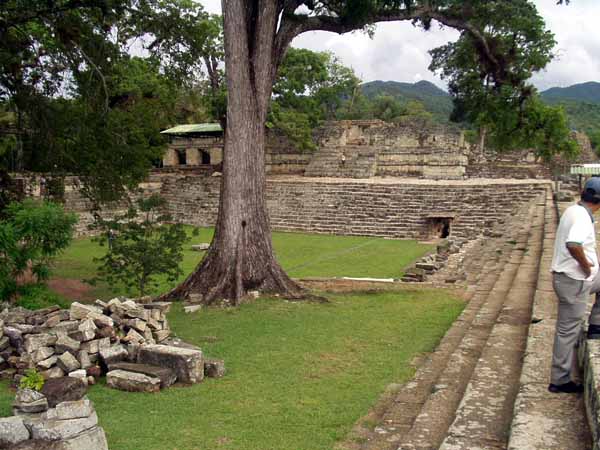
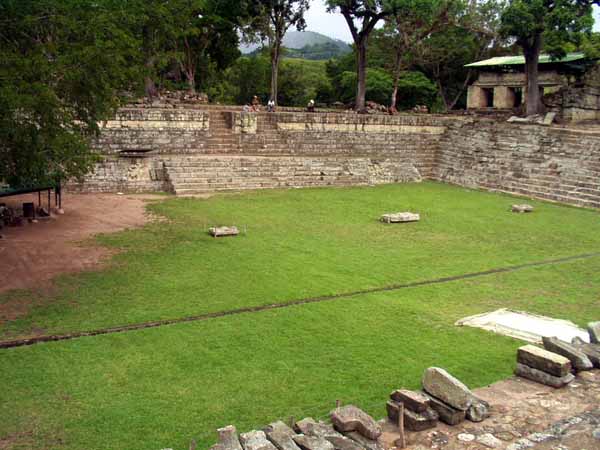
A zoom on the jaguar frieze on the far side of Jaguar Place, followed by a depiction of a sun god over the stairs. Sorry I couldn't zoom any more. All these pictures were taken from the top of Temple 16:
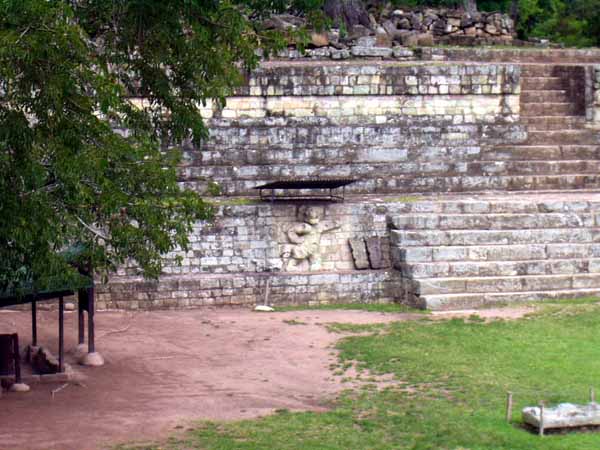

Two pictures of the top of Temple 22. I'm not sure what the sinister carvings represent:
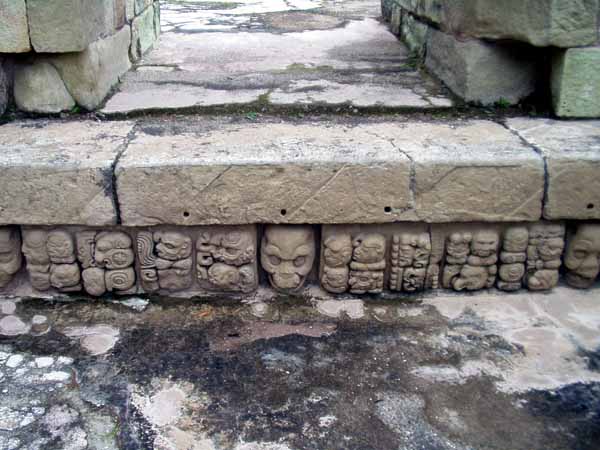
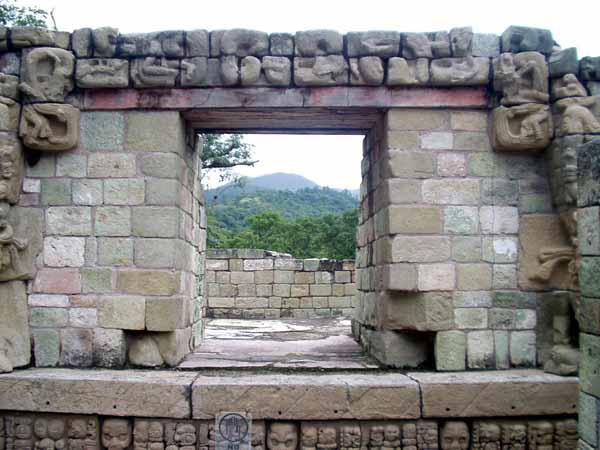
Here I am on top of Temple 11 with the main plaza in the background. Next is a picture of the head of one of four gods believed to hold up the world. In Greek mythology Atlas did the job by himself.
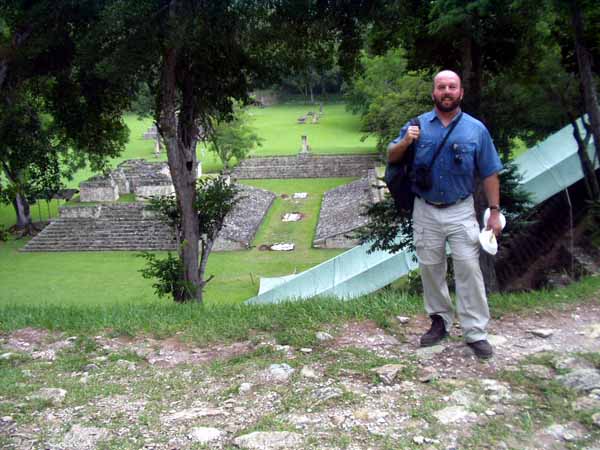
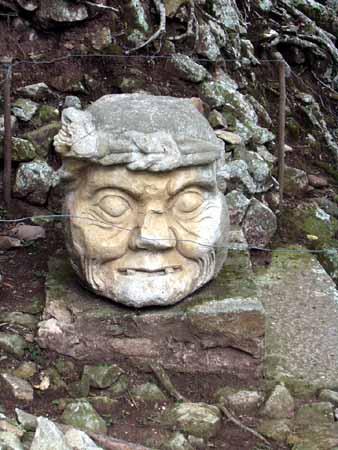
Another picture of the main plaza from the top of Temple 11, this time without me in the way. Following that is a composite picture of the main plaza taken from one end of the plaza:
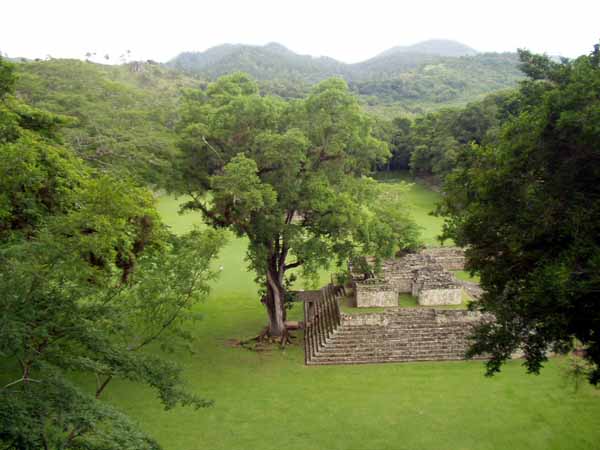
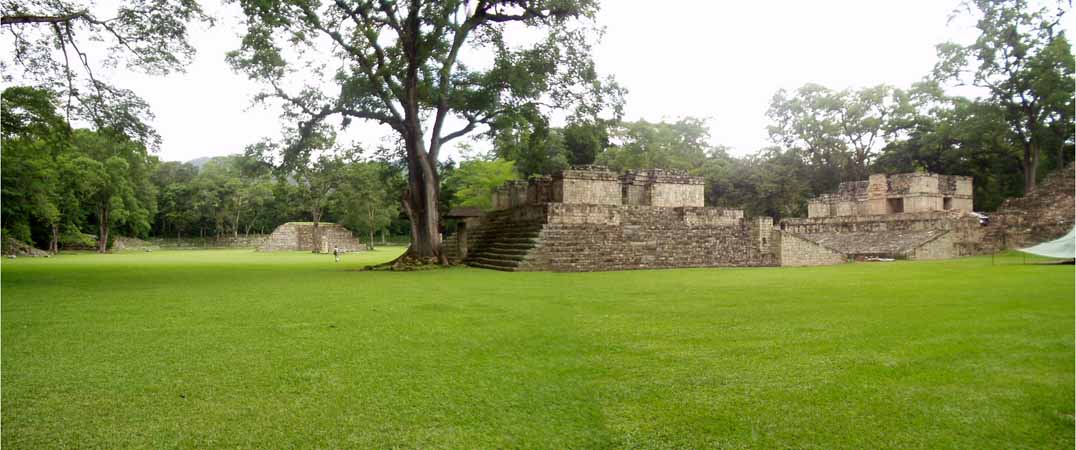
On the east side of the southeast corner of the main plaza is the Hieroglyphic Stairway, and in front of it is Stella M with a depiction of the 15th king, King Smoke Shell. Following that is a picture of some of the hieroglyphics at the bottom of the stella:
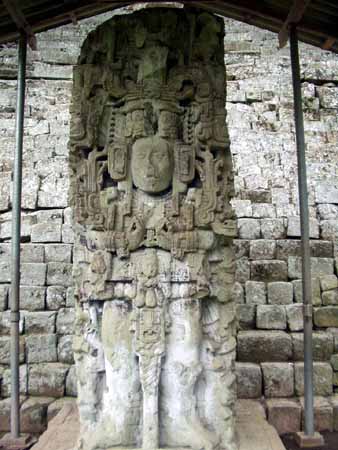
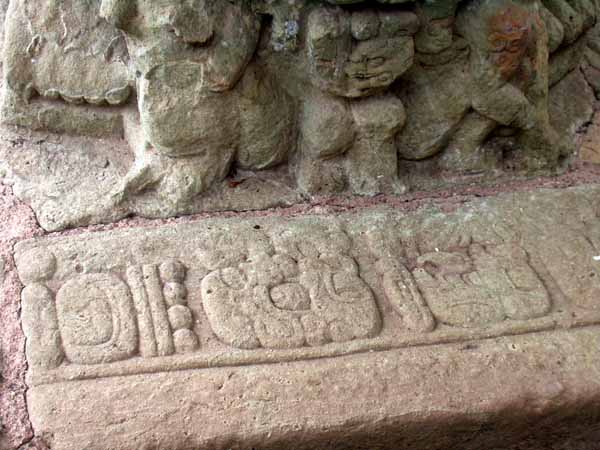
A composite picture of the Hieroglyphic Stairway, with 63 steps that originally described the history of the royal families of Copan. Only a partial history has been translated. The altar in front is supposed to show a human head emerging from the jaws of a plumed serpent, but it is kind of hard to see that in this picture:
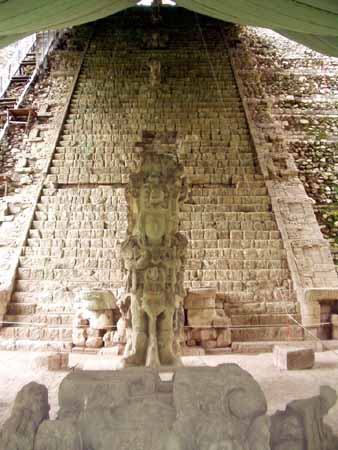
Just an interesting architectural note; this is the Mayan version of an arch:
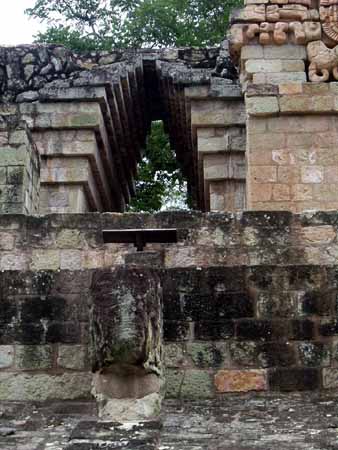
Stella 3, depicting the 12th King Smoke Jaguar, and the guide and Stella H, depicting the 13th King Smoke Rabbit:

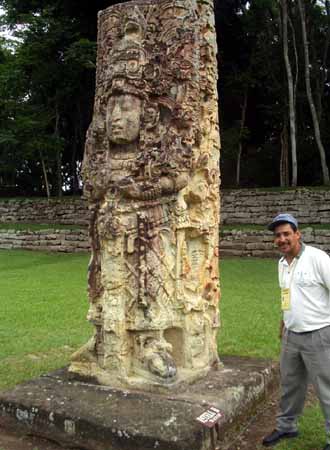
The back of Stella H, and a detail of Stella H with some of the original paint:

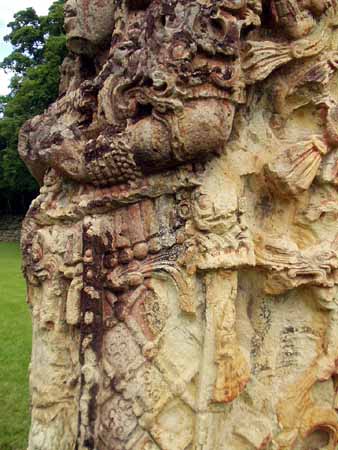
My guide again, trying to point out how this is a statue of a two headed snake. The Mayans had a very stylized way of depicting people and animals:
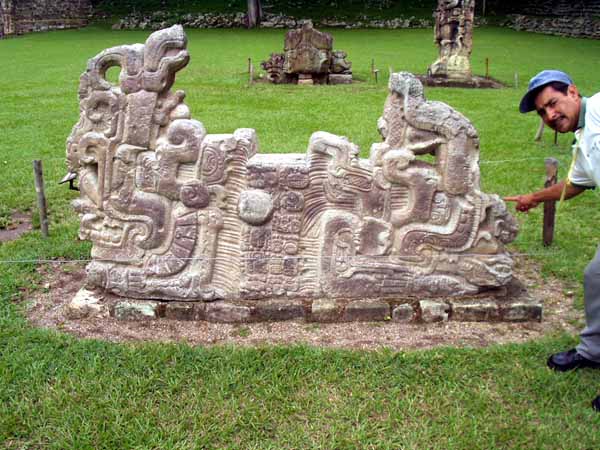
Another Stella of King Smoke Rabbit with a surprising amount of the original paint. That is a turtle in front of Smoke Rabbit:
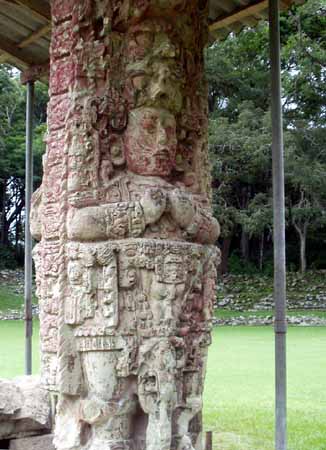
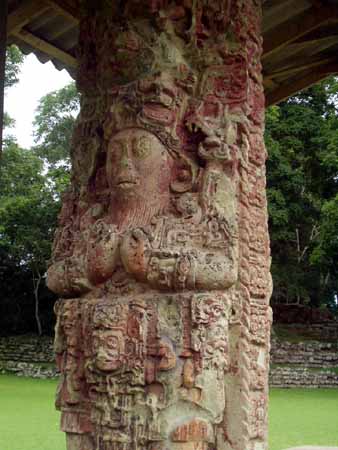
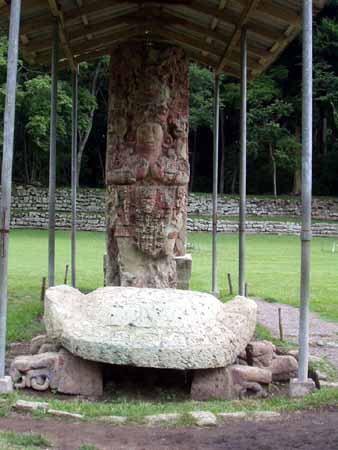
Stella 4, also Smoke Rabbit, and an altar used for human sacrifice. The Mayans did practice human and animal sacrifice, but not to the same extremes as the Aztecs:
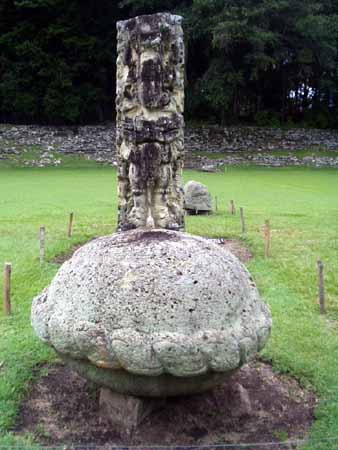
After the guided tour ended I went for a walk on a trail through an unexcavated residential area. If you look into the gloom to the left of the trail you will see a mound. Underneath the mound is a Mayan building of some sort. There are many mounds like this around Copan:
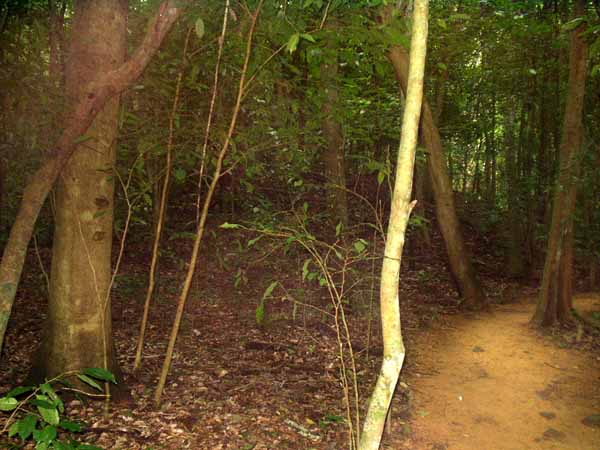
The remains of a Mayan ball court. The Mayans were big on the sport and attached a great deal of religious significance to it:
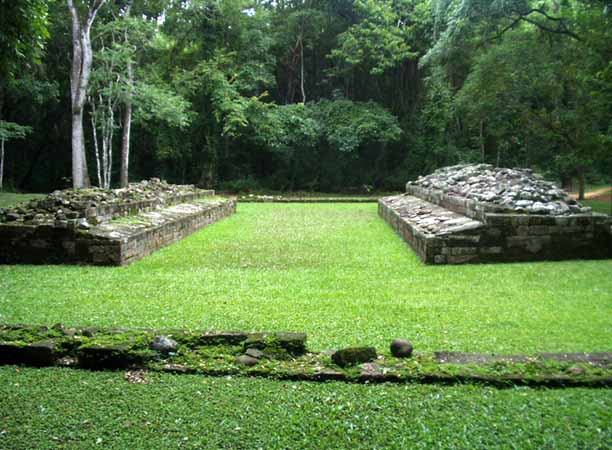
Some pictures from inside the Copan Museum, starting with a depiction of Rosalita inside Temple 11, and another view of the scale model of Rosalita.
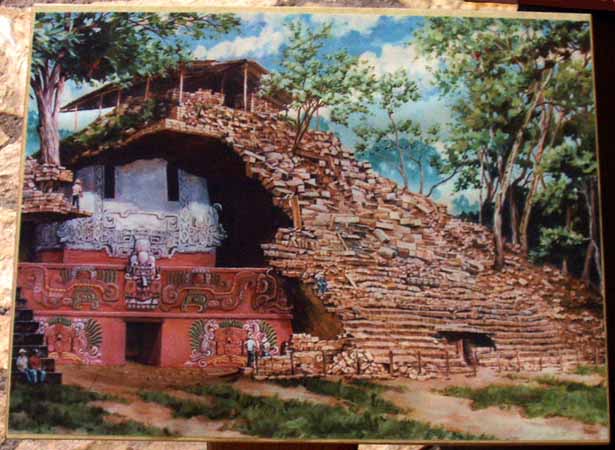
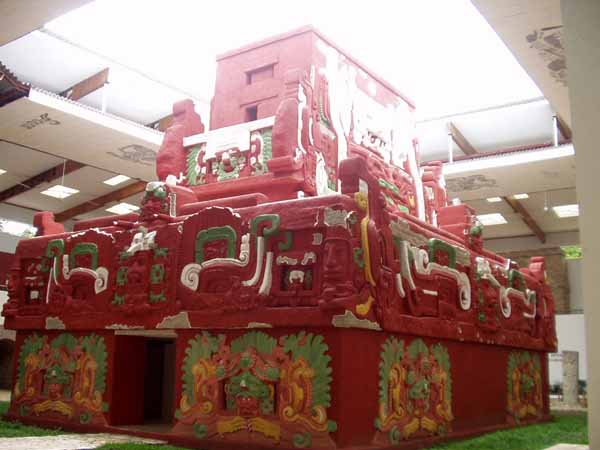
The stairs and skull platform originally on Temple 16.
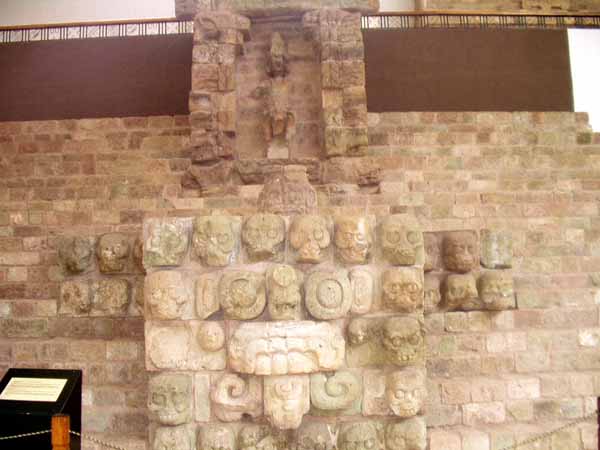
An interesting Mayan sculpture and the plaque describing its significance.
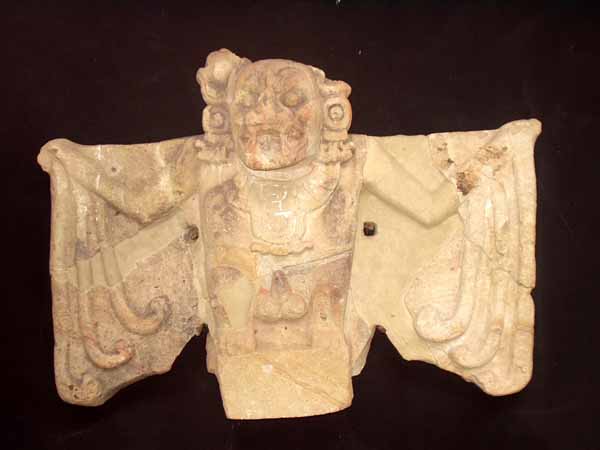
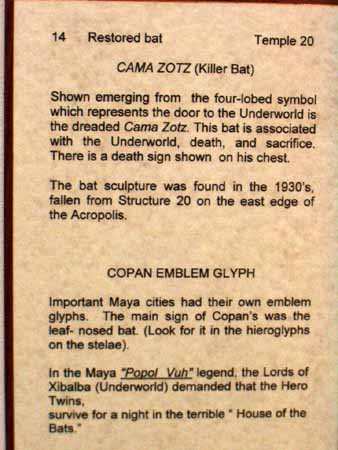
And finally, one of Copan's best preserved faces, this one of the Maize God.
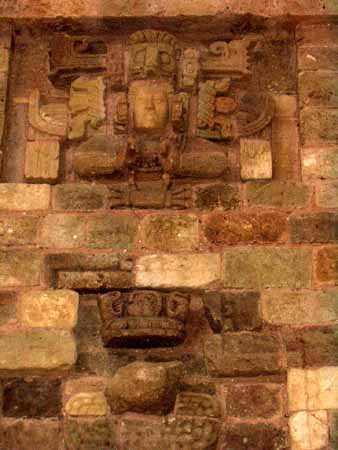
The next day, Tuesday, September 2, I walked around Copan Ruinas, took care of some e-mail, and put a great many postcards in the mail. Before leaving Roatan I had coordinated travel plans with Billy, manager of Mono Loco, who had business in Antigua. On Wednesday I met him and caught a lift across the border and all the way to Antigua in Guatemala. It pays to be on good terms with your bartenders.